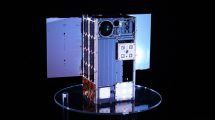 Synspective Inc., a SAR satellite data and analytic solutions provider, has announced the official launch schedule of StriX-1, the company’s third SAR satellite.
Synspective Inc., a SAR satellite data and analytic solutions provider, has announced the official launch schedule of StriX-1, the company’s third SAR satellite.
StriX-1 has a launch window starting from mid-September (UTC). The exact lift-off target date and time will be confirmed soon. The mission is scheduled for lift-off on Rocket Lab’s Electron launch vehicle from Rocket Lab Launch Complex on the Mahia Peninsula in New Zealand.
StriX-1 is the company’s third SAR satellite following StriX-α and StriX-β, which were launched in December 2021 and March 2022 respectively with Rocket Lab.
Unlike the previous two satellites, which are classified as demonstration satellites, StriX-1 is the first pre-commercial satellite for full-scale business expansion. This is in anticipation of the production and operation of multiple satellites in the future, with improved batteries and faster downlink speeds to capture more data and meet the needs of a wide range of customers from the government to the private sector.
Following StriX-1, the company will put three more satellites into orbit by the end of 2023. This will bring it closer to a planned constellation of 30 satellites for 2026 to enable wide-area, high-frequency Earth observation.
Speaking about the launch, Dr Motoyuki Arai, Synspective Founder and CEO, said: “We are very pleased to be collaborating again with Rocket Lab, a leading company in the space industry, which has successfully put our two demonstration satellites, StriX-α and β, into orbit. At the same time, I would like to thank both companies’ teams for their hard work, which enabled us to launch without major delays despite various uncertainties. Synspective has been developing techniques and accumulating know-how regarding multiple operations with two satellites already in orbit. With the addition of the first commercial satellite, StriX-1, we will not only gain experience in the manufacturing process, but also increase the amount of data we collect which will accelerate business expansion. We will finally start full-scale construction of the SAR satellite constellation and strive to realise a ‘learning world’ that creates a sustainable future through collective intelligence based on data.”












Add Comment